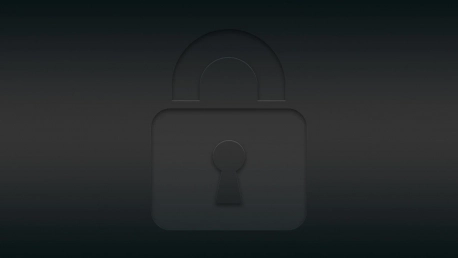With the advent of increasingly complex digital threats, the role of cybersecurity in the software development life cycle has never been more critical. DevSecOps emerges as the synergistic approach where development, security, and operations converge to forge robust security postures from the beginning. This article explores the transformative potential of DevSecOps on the cybersecurity landscape.The inherent integration of Application Security Posture Management into development frameworks is revolutionizing software security. In the future, security measures won’t be an afterthought but a foundational component, seamlessly infused throughout the development process.
The Evolution of DevSecOps
Integrating Continuous Everything
Continuous everything, from ideation to deployment, epitomizes the DevSecOps approach. As teams adopt this methodology, the boundaries between stages blur, resulting in a more efficient and secure development pipeline. This philosophy is not merely about merging operations; it’s about fostering a culture where security is considered with the same priority as functionality and performance. By embracing continuous integration, continuous deployment, and continuous monitoring, businesses can respond more swiftly to vulnerabilities and market demands, keeping them a step ahead in the ever-evolving cybersecurity landscape.
Embracing Machine Learning and AI
The application of AI in security tasks will become a mainstay, offering unprecedented automation capabilities. AI co-pilots and automated testing will serve as vigilant protectors during the software lifecycle, significantly expanding the capabilities of human teams. Machine learning algorithms can identify patterns and anomalies that human eyes might overlook, making them indispensable in a domain where speed and precision dictate success. As these systems learn and evolve, they begin to preempt security threats, refining their ability to ward off potential cyber-attacks with each iteration and fostering a development ecosystem that is as resilient as it is dynamic.
Shifting Left: Proactive Cybersecurity Measures
SaaS-Based Tools in the ETL Pipeline
Expect rapid adoption and growth in the use of SaaS-based security tools. This trend will empower teams to quickly bolster their security measures without compromising development speed. Integrating these tools within Extract, Transform, Load (ETL) pipelines enhances the ability to secure data from the point of collection to its final destination. This means a more holistic approach to security, where data integrity and protection are maintained throughout its lifecycle by leveraging SaaS solutions that are scalable, accessible, and continuously updated to combat the latest threats.
Embedding Security in CI/CD
A ‘shift-left’ approach to security will see the embedding of security controls and automated testing earlier in the CI/CD pipeline. By introducing security measures sooner, developers can identify and mitigate vulnerabilities more effectively. Shifting security to the left means making it an integral part of the development cycle, rather than an endpoint. This proactive stance minimizes the risk of security breaches and facilitates the development of software that is secure by design. Developers become more security-minded, and the end product emerges more robust against cyber adversities.
Policy and Infrastructure as Code
Policy as Code
Security policies managed through code are set to rise in popularity. Tools like Open Policy Agent will become essential in governing security across multiple platforms and infrastructures. Code-based policy management ensures that security protocols are not merely recommendations but are enforceable and consistently applied. The beauty of policy as code lies in its ability to swiftly adapt to varied environments, providing a uniform security posture that can withstand the complexities presented by multi-cloud and hybrid infrastructures.
Model-Based Systems in DevSecOps
The intersection of model-based systems engineering with DevSecOps will ensure secure systems through model-driven analysis and design, creating an additional layer of security. These model-based approaches allow for the creation of digital twins, in which systems can be simulated and tested against potential security threats before being deployed. This integrative approach not only enhances security protocols but also streamlines regulatory compliance, as models can be easily modified to align with evolving standards and policies.
Advancing Security in Decentralized Networks
Enhanced Security Through Edge Computing
The push towards edge computing in DevSecOps will lead to greater security for decentralized systems. Lower latency and adaptive defenses will become crucial in a distributed computing environment. By processing data closer to its source, edge computing reduces the attack surface, thereby diminishing the potential for large-scale breaches. This is particularly pertinent as the Internet of Things (IoT) expands, and the need for agile, localized security becomes increasingly paramount.
Just-In-Time Access Control
As identity-based threats increase, implementing just-in-time access becomes a crucial defense strategy. Precision-based access will play a notable role in preventing unauthorized use of compromised credentials. This approach grants access on an as-needed basis, with stringent time limits and contextual gating, significantly reducing the exploitable windows that attackers so often seek. In a digital ecosystem where traditional perimeter defenses are no longer sufficient, just-in-time strategies augment security with flexibility and intelligence.
Containerization and Quantum Computing
Container Security
With the rise of containerization, the security of containers takes on new importance. Techniques like image scanning and runtime protection will be heavily prioritized to protect containerized applications. Containers, while bolstering scalability and deployment speed, introduce unique risks that must be mitigated. Recognizing these risks early and establishing rigorous security practices around container usage will be integral for organizations hoping to harness the power of container technology without compromising their security posture.
Quantum Integration in DevSecOps
Quantum computing’s potential to crack current encryption methods demands that DevSecOps strategies adapt swiftly. The evolution of quantum-resistant encryption algorithms will become a priority, ensuring that cybersecurity measures stay ahead of quantum computing’s threats. As the capabilities of quantum computing unfold, embedding quantum-safe protocols into DevSecOps will fortify security measures, making them impervious to even the most advanced computational onslaughts.Moving forward, businesses can expect DevSecOps to not only address cybersecurity from the initial stages of development but also to set a new standard for how security is perceived and implemented in the creation of software. As we embrace this shift, security will become synonymous with software development, ensuring a safer digital future.









